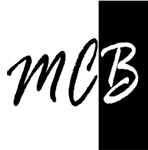And that’s just the financial impact. When a new hire walks out, not only are you a staff member down, the remaining people in your team may suffer from low morale, your projects could be derailed and you can lose confidence in your decision making – how can you be sure you won’t make the same mistake again?
Why is hiring for cultural fit so hard?
Then there’s the unconscious bias that comes into play. It doesn’t take much for a manager to be won over by the wrong candidate. Maybe they seemed eager, which the manager interpreted as motivated to do the job. Or maybe they reminded the manager of themself. (Research has found that hiring managers often tall into the trap of hiring those who could be their new best buddy).
So how do you overcome unconscious bias and identify candidates who will be a good cultural fit?
Define company culture
Cultural fit as the likelihood that someone will reflect and/or be able to adapt to the core beliefs, attitudes, and behaviours that make up your organisation.In all likelihood, different people in your organisation will have different views about what they think the culture is. You may also find that your organisational culture and team culture are quite different.
There are lots of ways you can develop a better definition of your culture – from as simple as exploring it in a team meeting, to surveys, assessments and talent analytics from data across the organisation.
Another way you can understand your organisational culture is by looking at the way employees are recognised and rewarded. For example, in a performance-driven culture, those with a high drive to succeed will rise up the ranks more quickly.
Use behavioural and motivation-indicator questions
As organisations realise the value of hiring for cultural fit, questions geared to gauge a candidate’s tendencies and motivation are becoming increasingly common during interviews.Most of these questions relate to asking a candidate what they would do in certain situations and explore what they like and why. An example could be: What has been your most preferred reward and recognition initiative across the places you’ve worked in the last five years? While this doesn’t overcome unconscious bias completely, it provides an opportunity to delve more into your candidate’s motivations, behaviours and values, rather than their experience only.
Use psychological assessments
While these are good places to start, without the right tools and expertise, hiring managers will still be without objective data to determine whether a candidate will be a cultural match. Assessment tools are designed to tap into a candidate’s motivation, preferences and tendencies to compare to the organisation’s culture. It’s not uncommon for hiring managers to say that they had a gut feeling that a candidate wasn’t suitable, and then the assessment shows why.For example, it’s possible to have two candidates who are both sociable, but who manifest this in different ways. One candidate may like to chat with their colleagues every morning as they work while the other may prefer to work hard, then go out with their colleagues after their work is done. The different working preferences and motivation of the two candidates will likely have different impacts on the team and the organisation.
Typically, organisations have relied on psychological assessments at the end of the hiring process, but there is a missed opportunity in not using this information a lot earlier on.
Ideally, you should evaluate candidates for cultural fit throughout the process, from the phone screen, through to assessment, interviews and the reference check.
When you know your work culture and what you are looking for, hiring is no longer a guessing game. As the adage goes, knowledge is power. Or in this case, knowledge of cultural fit means more power to you and your team.
Reference:
https://au.hudson.com/insights/hiring/hiring-for-cultural-fit/
